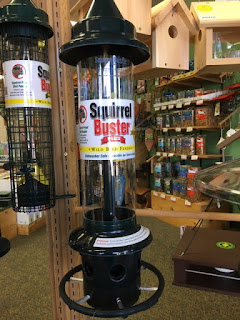A family of young bluebirds enjoying live mealworms
I like to say that I'm a backyard bird dude. I didn't study ornithology in college, but I do read a lot and I have stayed in a Holiday Inn Express many times. Oh, I also own the Wild Bird Center of Johns Creek, Georgia. It's kind of my job to get wild birds into my customers beautiful backyards. And I love it.
Why do I do it? Why sell bird seed, bird feeders, and mealworm? Its comes down to helping my customer slow down their hectic lives by bringing nature into their backyards. It's a lifestyle. Imagine being stuck in Johns Creek traffic, finally making it home after an hour, grabbing a glass of wine and sitting on the deck just enjoying nature.
Study after study shows that introducing nature into your weekly routine be it walking in the park, gardening, or just watching nature is therapeutic. The goal of my business is to bring as much nature as possible into my customer's yards.
It is fairly simple and really inexpensive to start attracting wild birds. It can be as simple as throwing a handful of black oil sunflower on the ground or placing it on your deck's handrail. Eventually one bird will see the seed. Once that one bird starts eating the other birds won't be far behind. It could take a day or two to get the first bird but they will come.
As you get a little more advanced you'll start putting up bird feeders, bird houses, etc. You'll start moving them around to enhance the flowers, trees, and shrubs that provide shelter to the wild birds. Eventually... you'll want more birds!
Not a problem.
It's easy to attract different birds to a backyard. One of the simplest is to start offering live mealworms as a food source. Who eats the worms? Well the simple answer is any bird you see on the ground is probably an insect eater. However, in our store everyone is trying to get the Eastern Bluebird.
Male Eastern Bluebird
Okay, yes, these are live worms. Yes, eventually you are probably going to have to touch them. Yes, at first it seem kind of gross but hey, if you want the bluebirds you got to get the worms.
Pricing?
Here's the best part: You can offer them for free or almost free by growing them yourself! They are easy to grow but take about 200 days from egg to worm. For those folks in the greater Atlanta, Georgia area that don't want to mess with growing them we are running a
store special on mealworms. Normally live mealworms run $11.99 for 1000 worms, and $39.99 for 5000 worms but the store special is $9.99 and $34.99 while supplies last.
A cup of 1000 live mealworms
Keep the live mealworms in your refrigerator. Although they are fine at 80 degree temperatures they will keep growing and going through their lifecycle at the higher temps. To keep them dormant and stop the growth at the worm stage just put them in the fridge. They can last months like that.
Adding live mealworms is an easy way to attract a wider variety of wild birds to your backyard sanctuary.
David Peterson is the owner of the Best Nest of Georgia, Inc. which includes in its corporate family a retail store called the
Wild Bird Center of Johns Creek Georgia. The Wild Bird Center focuses on bringing nature to your backyard using bird seed, bird feeders, mealworms, and bird houses to attract wild birds to your yard. You can reach the Wild Bird Center at 770-418-1990 or by contacting David via email: david@thebestnest.net













